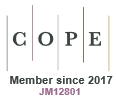Australian native fruit Davidson’s plum in yoghurt: prebiotic properties and influence on gut microbiome in vitro
Thomas Leadbetter A , Said Ajlouni A and Chaminda Senaka Ranadheera A *A

Thomas Leadbetter is a PhD student at the University of Melbourne. His PhD project is on influence of Australian native fruits on human gut microbiome. |

Assoc. Prof. Said Ajlouni is currently teaching Food Microbiology for Master students and Advanced Food Analysis for undergraduate students at the University of Melbourne. His principle research interests focus on food safety, quality and functionality, with special emphasis on probiotics and prebiotics. |

Assoc. Prof. Senaka Ranadheera is a food microbiologist with teaching and research responsibilities. His research interests focus on probiotics and prebiotic food applications. |
Abstract
Ooray/Davidson’s plum (Davidsonia pruriens) is a native Australian tree that produces fruits rich in antioxidants, fibre, anthocyanins and other nutrients that have been consumed by Aboriginal and/or Torres Strait Islander peoples for many thousands of years. Their prebiotic properties have not been well documented in the literature. In this study, additions of D. pruriens as a source of prebiotics were evaluated by preparing yoghurts containing probiotic bacteria Lactobacillus acidophilus and Bifidobacterium animalis subsp. lactis with several different concentrations of D. pruriens powder (0, 0.5, 1, 2.5 and 5% (w/v)) and measuring yoghurt microbiological properties during 4 weeks of refrigerated storage. Viability of probiotics after in vitro digestion and colonic fermentation were also analysed. Microbiological shelf life was not affected by the additions of D. pruriens in yoghurt. Probiotic L. acidophilus and starter culture bacteria Streptococcus thermophilus survived well (~6 log CFU/g) in all types of yoghurts up to 2 weeks of storage. Yoghurt was shown to be a suitable product to enhance the viability of probiotic lactic acid bacteria during the colonic fermentation. D. pruriens 5% in yoghurt had a significantly higher survival after 48 h indicating potential beneficial effects of D. pruriens on probiotics and gut microbiota.
Keywords: Aboriginal and/or Torres Strait Islander peoples, bushfoods, colonic fermentation, digestion, fermentation, fermented foods, fruit yoghurt, functional foods, gut microbiota, lactic acid bacteria, probiotics.
 Thomas Leadbetter is a PhD student at the University of Melbourne. His PhD project is on influence of Australian native fruits on human gut microbiome. |
 Assoc. Prof. Said Ajlouni is currently teaching Food Microbiology for Master students and Advanced Food Analysis for undergraduate students at the University of Melbourne. His principle research interests focus on food safety, quality and functionality, with special emphasis on probiotics and prebiotics. |
 Assoc. Prof. Senaka Ranadheera is a food microbiologist with teaching and research responsibilities. His research interests focus on probiotics and prebiotic food applications. |
References
2 Richmond R, Bowyer M, Vuong Q. Australian native fruits: potential uses as functional food ingredients. J Funct Foods 2019; 62: 103547.
| Crossref | Google Scholar |
3 John OD, Mouatt P, Prasadam I, Xiao Y, Panchal SK, Brown L. The edible native Australian fruit, Davidson’s plum (Davidsonia pruriens), reduces symptoms in rats with diet-induced metabolic syndrome. J Funct Foods 2019; 56: 204-215.
| Crossref | Google Scholar |
4 Lee WJ, Lucey JA. Formation and Physical Properties of Yoghurt. Asian-Australas J Anim Sci 2010; 23: 1127-1136.
| Crossref | Google Scholar |
5 Lourens-Hattingh A, Viljoen BC. Yoghurt as probiotic carrier food. Int Dairy J 2001; 11: 1-17.
| Crossref | Google Scholar |
7 Rashwan AK, Karim N, Xu Y, Cui H, Fang J, Cheng K, Mo J, Chen W. Chemical composition, quality attributes and antioxidant activity of stirred-type yogurt enriched with Melastoma dodecandrum Lour fruit powder. Food Funct 2022; 13: 1579-1592.
| Crossref | Google Scholar | PubMed |
8 Senaka Ranadheera C, Evans CA, Adams MC, Baines SK. Probiotic viability and physico-chemical and sensory properties of plain and stirred fruit yogurts made from goat’s milk. Food Chem 2012; 135: 1411-1418.
| Crossref | Google Scholar | PubMed |
9 Kim K-H, Hwang H-R, Jo J-E, Lee S-Y, Kim N-Y, Yook H-S. Quality Characteristics of Yoghurt Prepared with Flowering Cherry (Prunus serrulata L. var. spontanea Max. wils.) Fruit Powder during Storage. J Korean Soc Food Sci Nutr 2009; 38: 1229-1236.
| Crossref | Google Scholar |
10 Ranadheera CS, Evans CA, Adams MC, Baines SK. In vitro analysis of gastrointestinal tolerance and intestinal cell adhesion of probiotics in goat’s milk ice cream and yoghurt. Food Res Int 2012; 49: 619-625.
| Crossref | Google Scholar |
11 Fazilah NF, Ariff AB, Khayat ME, Rios-Solis L, Halim M. Influence of probiotics, prebiotics, synbiotics and bioactive phytochemicals on the formulation of functional yoghurt. J Funct Foods 2018; 48: 387-399.
| Crossref | Google Scholar |
12 Cremon C, Barbaro MR, Ventura M, Barbara G. Pre- and probiotic overview. Curr Opin Pharmacol 2018; 43: 87-92.
| Crossref | Google Scholar | PubMed |
13 Florowska A, Krygier K, Florowski T, Dłużewska E. Prebiotics as functional food ingredients preventing diet-related diseases. Food Funct 2016; 7: 2147-2155.
| Crossref | Google Scholar | PubMed |
14 Al-Sheraji SH, Ismail A, Manap MY, Mustafa S, Yusof RM, Hassan FA. Prebiotics as functional foods: a review. J Funct Foods 2013; 5: 1542-1553.
| Crossref | Google Scholar |
15 Gibson GR. Prebiotics as Gut Microflora Management Tools. J Clin Gastroenterol 2008; 42 Suppl 2: S75-S79.
| Crossref | Google Scholar | PubMed |
16 Yang J, Martínez I, Walter J, Keshavarzian A, Rose DJ. In vitro characterization of the impact of selected dietary fibers on fecal microbiota composition and short chain fatty acid production. Anaerobe 2013; 23: 74-81.
| Crossref | Google Scholar | PubMed |
17 Wollowski I, Rechkemmer G, Pool-Zobel BL. Protective role of probiotics and prebiotics in colon cancer. Am J Clin Nutr 2001; 73: 451.
| Crossref | Google Scholar | PubMed |
18 da Silva JK, Cazarin CB, Junior SB, Augusto F, Junior MR. Passion fruit (Passiflora edulis) peel increases colonic production of short-chain fatty acids in Wistar rats. LWT Food Sci Technol 2014; 59: 1252-1257.
| Crossref | Google Scholar |
19 Mani JS, Johnson JB, Hosking H, Ashwath N, Walsh KB, Neilsen PM, Broszczak DA, Naiker M. Antioxidative and therapeutic potential of selected Australian plants: a review. J Ethnopharmacol 2021; 268: 113580.
| Crossref | Google Scholar | PubMed |
22 Ajlouni S, Ranadheera CS, Chua EL. Encapsulation increases the in vitro bioaccessibility of probiotics in yoghurt. Int J Dairy Technol 2021; 74: 118-127.
| Crossref | Google Scholar |
23 Dave RI, Shah NP. Viability of yoghurt and probiotic bacteria in yoghurts made from commercial starter cultures. Int Dairy J 1997; 7: 31-41.
| Crossref | Google Scholar |
24 Graf D, Di Cagno R, Fåk F, Flint HJ, Nyman M, Saarela M, Watzl B. Contribution of diet to the composition of the human gut microbiota. Microb Ecol Health Dis 2015; 26: 26164.
| Crossref | Google Scholar | PubMed |
25 Oliver JD. The viable but nonculturable state in bacteria. J Microbiol 2005; 43: 93-100.
| Google Scholar |
26 Priya S, Blekhman R. Population dynamics of the human gut microbiome: change is the only constant. Genome Biol 2019; 20: 150.
| Crossref | Google Scholar | PubMed |
27 Wang M, Zhang Z, Sun H, He S, Liu S, Zhang T, Wang L, Ma G. Research progress of anthocyanin prebiotic activity: a review. Phytomedicine 2022; 102: 154145.
| Crossref | Google Scholar | PubMed |
28 Harriden B, Stathopoulos C, Chockchaisawasdee S, McKune AJ, Naumovski N. Physicochemical and Sensory Properties of Davidson Plum (Davidsonia jerseyana) Sorbet, a Potential for New Functional Food Product. Foods 2025; 14: 2902.
| Crossref | Google Scholar | PubMed |


